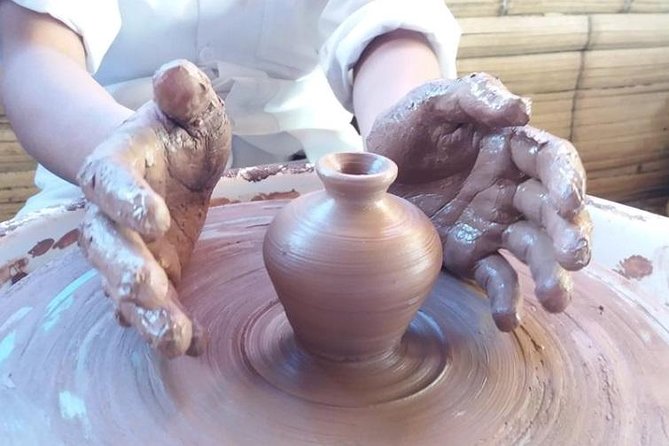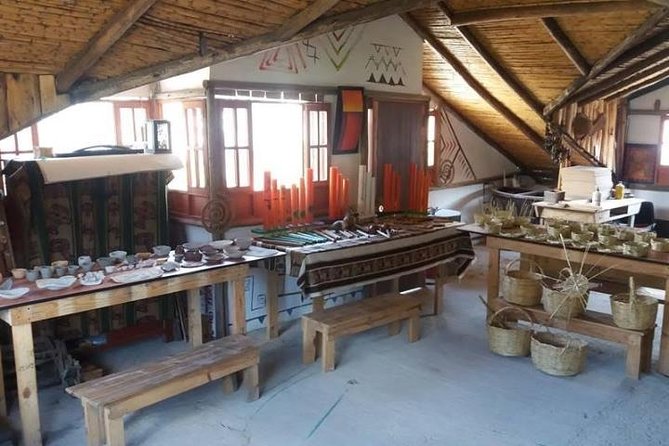The Muisca civilization of pre-colonial Colombia was renowned for its wealth of knowledge and expertise. From sustainable agriculture to intricate metalcraft, this vibrant Andean culture left an indelible mark on the region. Their sophisticated language, Muysccubun, not only facilitated communication but also preserved the rich oral traditions that underpinned Muisca society. Yet, the full extent of their intellectual achievements remains largely untapped, waiting to be further explored and celebrated. What secrets might the Muisca legacy hold, and how can we leverage their innovative spirit to address contemporary challenges?
Good To Know

- The Muisca had a deep understanding of their natural environment, utilizing sustainable agricultural practices to cultivate diverse crops like potatoes, corn, and quinoa.
- Muisca religious beliefs and practices, centered around a pantheon of deities and a reverence for nature, significantly influenced their social structure and worldview.
- The Muisca developed a complex social hierarchy with distinct roles, including hereditary rulers, community leaders, and skilled artisans and laborers.
- Muisca metalworkers were renowned for their exceptional craftsmanship, creating intricate jewelry, ceremonial objects, and utilitarian tools using gold, silver, and copper.
- The Muisca language, Muysccubun, was a unifying force, enabling effective administration and the preservation of cultural traditions through oral histories and communication.
Muisca Civilization Origins

The Muisca civilization originated in the Andean highlands of modern-day Colombia, where they flourished as a sophisticated society for centuries before the arrival of the Spanish conquistadors.
They were an advanced agricultural community, cultivating crops like potatoes, corn, and quinoa. The Muisca also developed a complex social and political structure, with a hierarchical system of caciques, or chiefs, who governed local communities.
Plus, they were skilled artisans, producing intricate gold and ceramics objects. The Muisca’s rich cultural heritage, including their unique language and religious beliefs, has left an indelible mark on the history and identity of the region.
You can also read our reviews of more tours and experiences in Colombia.
Muisca Religious Beliefs
Muisca religious beliefs were a central aspect of their sophisticated civilization. They worshipped a pantheon of deities, including Sua, the sun god, and Chie, the moon goddess.
The Muisca believed in an afterlife and conducted elaborate rituals to honor their gods. Priests, known as jeques, played a crucial role in Muisca religious practices, leading ceremonies and serving as intermediaries between the people and the divine.
The Muisca also had a deep reverence for nature, incorporating elements like water, mountains, and caves into their religious beliefs and practices.
These beliefs shaped the Muisca’s worldview and social structures, demonstrating the profound influence of religion in their culture.
Muisca Social Structure
A sophisticated social hierarchy underpinned the Muisca civilization, with distinct roles and responsibilities for various groups within their society.
At the top were the zipas and zaques, hereditary rulers who wielded significant political and religious power. Beneath them were the caciques, local chiefs who governed their own communities.
The majority of the population consisted of commoners, divided into farmers, artisans, and laborers. Slaves, often prisoners of war, made up the lowest rung.
This hierarchical structure ensured the efficient functioning of Muisca society, with each group contributing to the overall prosperity and stability of the civilization.
Muisca Agricultural Practices
Muisca’s agricultural practices underpinned their sophisticated civilization, with a focus on sustainable and diverse crop cultivation.
They grew a variety of crops, including maize, potatoes, quinoa, and cotton, utilizing advanced irrigation systems and terraced farming techniques.
The Muisca practiced crop rotation and intercropping, ensuring the long-term fertility of their lands.
They also domesticated llamas and guinea pigs, which provided both food and raw materials.
This diverse and holistic approach to agriculture allowed the Muisca to support a large population and develop a complex socioeconomic structure.
Their agricultural expertise was a key factor in the flourishing of Muisca culture and society.
Muisca Metalworking Techniques
Along With their advanced agricultural practices, the Muisca were renowned for their exceptional metalworking techniques.
They were skilled in crafting a variety of intricate objects, including:
- Intricate jewelry, such as necklaces, earrings, and nose ornaments
- Ceremonial objects, like elaborate headdresses and scepters
- Utilitarian tools, including agricultural implements and weapons
- Decorative elements for their buildings and structures
- Ceremonial masks and figurines used in religious rituals
The Muisca’s mastery of metalworking was a testament to their technological sophistication and cultural sophistication.
Their ability to work with metals such as gold, silver, and copper allowed them to create objects of immense beauty and symbolic significance.
Muisca Language and Communication
The Muisca’s linguistic prowess was a defining aspect of their sophisticated culture. They spoke Muysccubun, an intricate Chibchan language, which they used for a wide range of communication and knowledge-sharing.
The Muisca had a complex system of writing, employing pictographic symbols and ideograms to record historical events, religious rituals, and astronomical observations. Their oral traditions were equally impressive, with skilled orators conveying stories, myths, and cultural knowledge through intricate narratives.
The Muisca’s mastery of language enabled them to maintain a unified identity and effectively administer their realm, while also fostering intellectual exchange and cultural preservation across their communities.
Preserving Muisca Heritage
Preserving the Muisca’s rich cultural heritage has become a paramount concern for historians, anthropologists, and indigenous communities alike.
Efforts are underway to safeguard this ancient tradition:
- Documenting oral histories and traditional knowledge to create comprehensive archives
- Reviving Muisca language instruction in schools and community programs
- Protecting sacred sites and artifacts from looting and development
- Promoting sustainable tourism that empowers local Muisca communities
- Collaborating with indigenous leaders to develop culturally-sensitive preservation strategies
These multifaceted initiatives aim to ensure the Muisca legacy endures, honoring the resilience and ingenuity of this remarkable civilization.
Frequently Asked Questions
What Are the Tour Group Size Limits?
The tour is a private group experience, so there are no set group size limits. The group size will vary based on the number of participants booked for the tour.
Can the Tour Be Customized to Individual Preferences?
The tour can be customized to individual preferences. Travelers can work with the tour provider to tailor the itinerary, activities, and other aspects of the experience to meet their specific interests and needs.
Are There Any Age Restrictions for This Tour?
There are no age restrictions for this tour. The tour is suitable for travelers of all ages, though a moderate physical fitness level is required. Children are welcome to participate with their parents or guardians.
Can I Bring My Own Food and Drinks on the Tour?
Guests can’t bring their own food and drinks on the tour. The tour includes lunch, and outside food and beverages are not allowed. Guests should plan to enjoy the included meal during the experience.
What Documents Do I Need to Provide for the Tour Booking?
For the tour booking, the traveler will need to provide their passport name, number, expiry date, and country of issuance. These details are required at the time of booking.
The Sum Up
The Muisca civilization‘s rich knowledge in agriculture, metalwork, and language was the foundation of their complex and thriving society. Their sustainable farming methods, sophisticated metalworking techniques, and the importance of their native tongue in preserving cultural traditions demonstrate the depth and versatility of Muisca intellectual prowess. Though their civilization declined, the Muisca’s remarkable achievements continue to be a testament to their enduring legacy.
More Tour Reviews in Colombia
Not for you? Here's more nearby things to do in Colombia we have reviewed
- Grotta della Poesia, Torre dell’Orso, and Sant’Andrea: Self-guided Bike Tour
- Barranquilla’s Natural Wonders: Discovering Hidden Gems
- Cartagena in Times of War
- Cartagena: Roman Forum Entry Ticket
- Cartagena : Roman Theatre Museum Entry Ticket
- Cartagena: Panoramic Lift & Conception Castle Ticket
- 7 Best Guided Tours In Santa Marta
- 22 Best Tours In Salento
- 22 Best Tours In San Andres
- 25 Best Tours In Pereira
- 25 Best Tours In Cali
- 4 Best Tours In The Cayes
